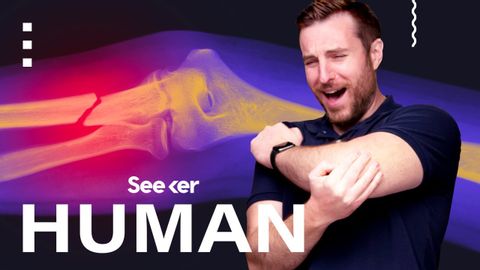你的身體是如何處理疼痛的? (How Does Your Body Process Pain?)
Summer 發佈於 2021 年 01 月 28 日  沒有此條件下的單字
沒有此條件下的單字US /səbˈskraɪb/
・
UK /səb'skraɪb/
US /spɪˈsɪfɪk/
・
UK /spəˈsɪfɪk/
US /ˈɛpɪˌsod/
・
UK /'epɪsəʊd/
- n.插曲;集;(電視或廣播節目的)一集;事件;一段時期;(疾病的)發作
US /ˈkɑɡnɪtɪv/
・
UK /ˈkɒgnətɪv/
- adj.認知的;認知能力的;認知發展的;認知療法的
